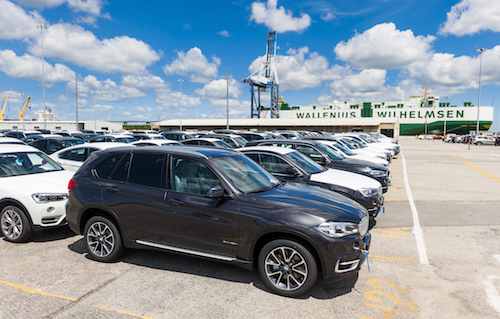 BMW’s Spartanburg vehicle assembly plant in South Carolina remained the largest US automotive exporter by value last year, even though production there decreased.
BMW’s Spartanburg vehicle assembly plant in South Carolina remained the largest US automotive exporter by value last year, even though production there decreased.
The factory turned out more than 371,280 cars during the year, 9.7% fewer than in 2016 because the X5/X6 assembly hall was shut down for four weeks during the summer and production of the all-new X3 only started in the second half, a company spokesman told Automotive Logistics.
“Ramp-up for a new model is typically slower in the beginning months,” he said.
Of last year’s production, 272,346 vehicles were shipped abroad, with an export value of $8.76 billion, versus the 287,700 cars worth $9.53 billion exported in 2016.
Based on numbers provided by the US Department of Commerce, that makes Spartanburg the leading US automotive exporter by value, BMW said.
In 2015, Spartanburg produced 400,904 cars with around 280,000, worth $9.8 billion, exported; in 2014, the total output was 349,949 vehicles, and some 260,000 were shipped abroad with a value of $9.2 billion.
Once off the assembly line and prepared for transport, vehicles are loaded onto Norfolk Southern rail wagons at Spartanburg. Around 86% are taken to the port of Charleston (pictured). The company also uses the ports of Savannah and Brunswick in Georgia, however, as well as Jacksonville, Miami and Everglades in Florida. BMW mainly contracts K-Line and MOL (Mitsui OSK Lines) but also makes use of other ocean transport providers, the spokesman said.
The top five export markets for Spartanburg-made vehicles are China, Germany, the UK, Canada and Austria.
According to the company, the plant produces 1,400 vehicles a day – the X3, X4, X5 and X6 sports activity vehicles and coupés (and their variants). The all-new BMW X7 will debut in late 2018. The factory, which employs 10,000 workers, has an annual production capacity of 450,000 cars.
Last June, the company announced it would invest $600m in Spartanburg from this year through to 2021 to support manufacturing infrastructure for future generations of X models. An additional 1,000 jobs will be created.





















